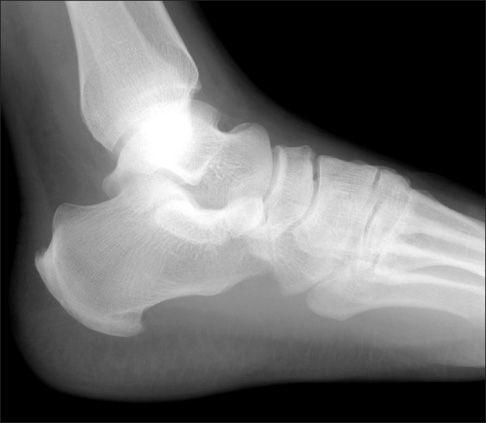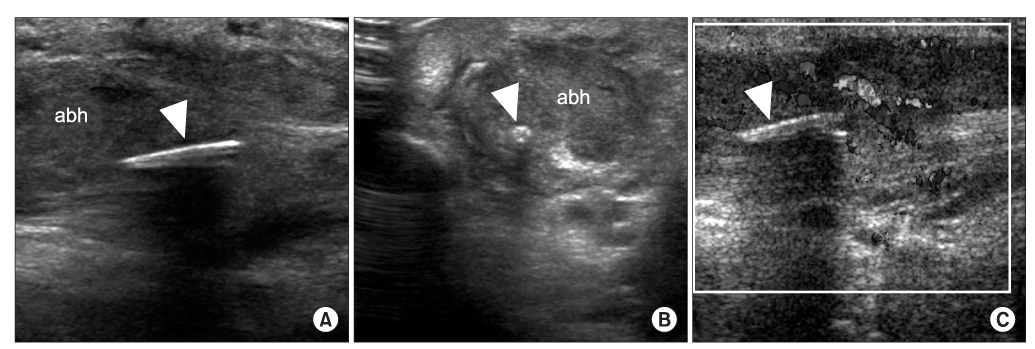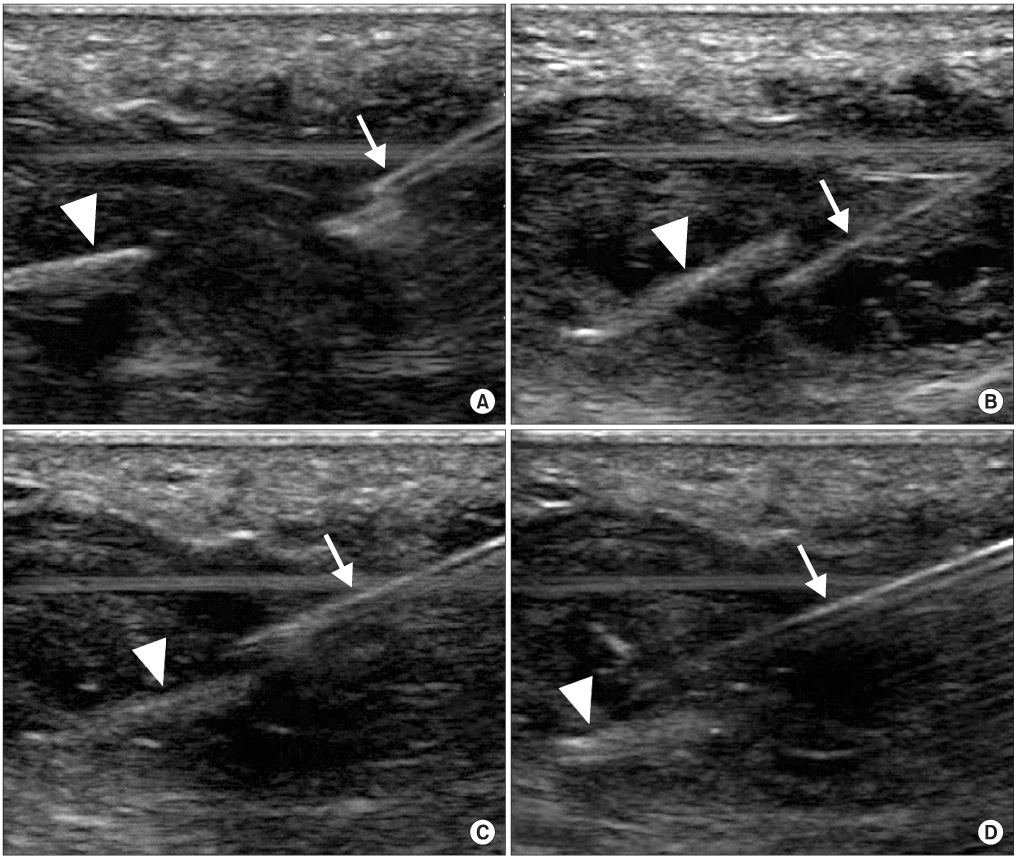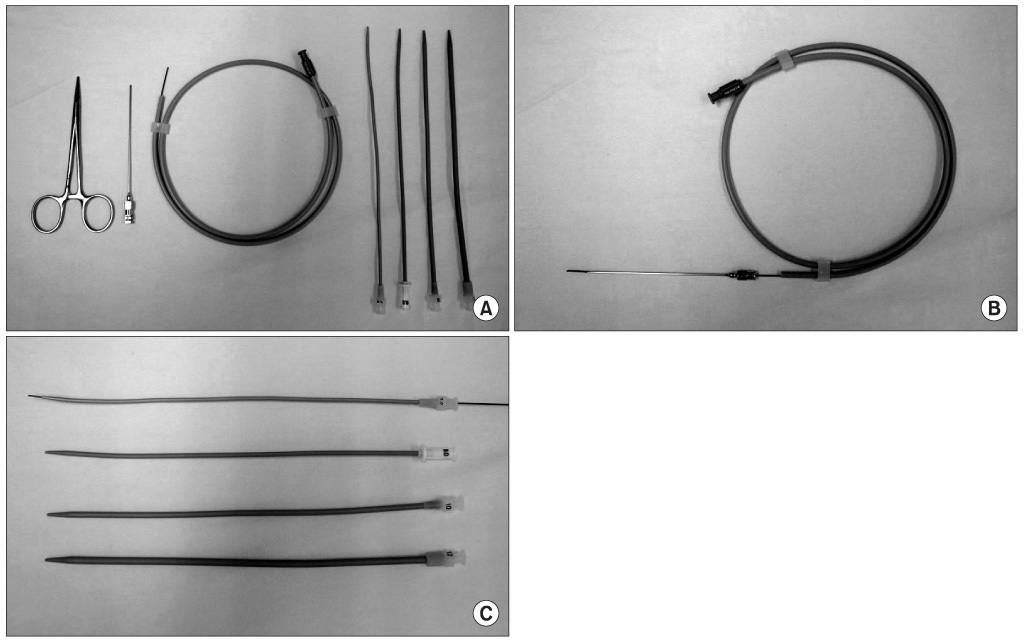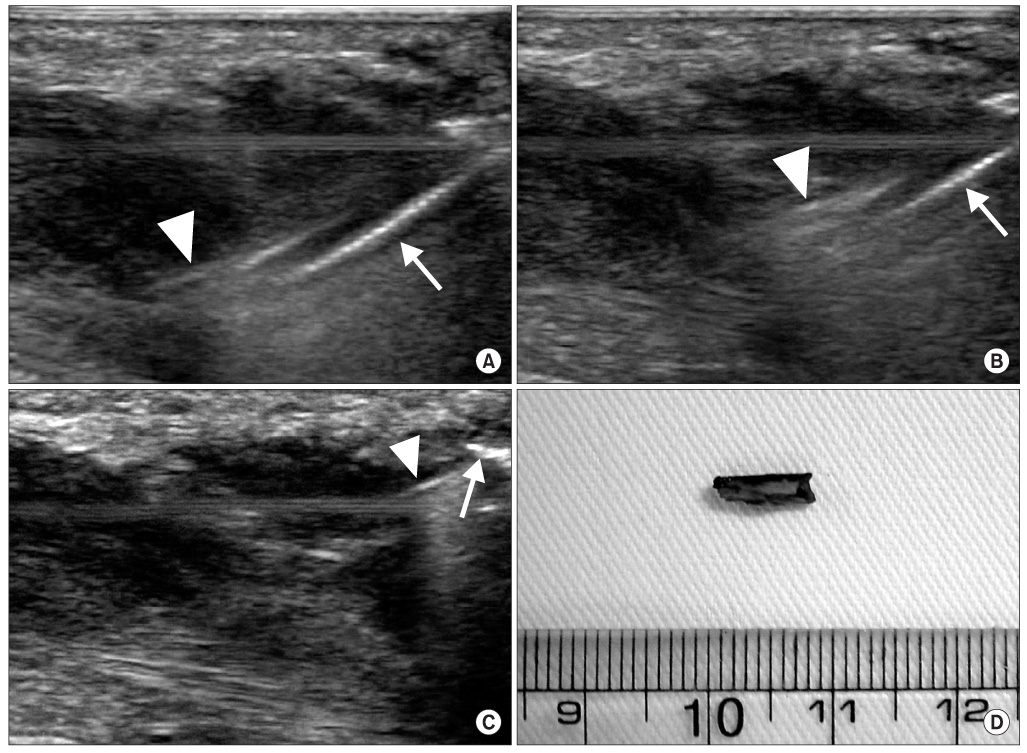J Korean Orthop Assoc.
2012 Apr;47(2):150-155. 10.4055/jkoa.2012.47.2.150.
Ultrasound-Guided Percutaneous Removal of Foreign Body Using Hydrodissection and Serial Dilators
- Affiliations
-
- 1Department of Orthopaedic Surgery, School of Medicine, Keimyung University, Daegu, Korea. oscho5362@dsmc.or.kr
- 2Department of Radiology, School of Medicine, Keimyung University, Daegu, Korea.
- KMID: 2185392
- DOI: http://doi.org/10.4055/jkoa.2012.47.2.150
Abstract
- High-resolution ultrasound of the painful, swollen left heel of a 54-year-old man, who reported that his symptoms had lasted 4 months, showed retention of a wooden foreign body in the heel. After administering local anesthesia and making a 5-mm skin incision, we performed hydrodissection of the foreign body from the adjacent soft tissue under real-time ultrasound guidance, using a 1% lidocaine solution. Then, we introduced an 18-gauge spinal needle and inserted a guide-wire through the needle. After we removed the needle, we introduced serial dilators in sizes ranging from 7 French to 12 French along the guide-wire to create a tract for mosquito forceps. Then, we introduced the mosquito forceps and removed the wooden foreign body. Ultrasound-guided percutaneous removal of foreign bodies is quick and safe. We believe that hydrodissection makes removal easier and that use of serial dilators minimizes soft-tissue injury and makes it easier to introduce mosquito forceps.
Keyword
MeSH Terms
Figure
Reference
-
1. Shiels WE 2nd, Babcock DS, Wilson JL, Burch RA. Localization and guided removal of soft-tissue foreign bodies with sonography. AJR Am J Roentgenol. 1990. 155:1277–1281.
Article2. Callegari L, Leonardi A, Bini A, et al. Ultrasound-guided removal of foreign bodies: personal experience. Eur Radiol. 2009. 19:1273–1279.
Article3. Blankstein A, Cohen I, Heiman Z, Salai M, Heim M, Chechick A. Localization, detection and guided removal of soft tissue in the hands using sonography. Arch Orthop Trauma Surg. 2000. 120:514–517.
Article4. Graham DD Jr. Ultrasound in the emergency department: detection of wooden foreign bodies in the soft tissues. J Emerg Med. 2002. 22:75–79.
Article5. Leung A, Patton A, Navoy J, Cummings RJ. Intraoperative sonography-guided removal of radiolucent foreign bodies. J Pediatr Orthop. 1998. 18:259–261.
Article6. Turner J, Wilde CH, Hughes KC, Meilstrup JW, Manders EK. Ultrasound-guided retrieval of small foreign objects in subcutaneous tissue. Ann Emerg Med. 1997. 29:731–734.
Article7. Schlager D. Ultrasound detection of foreign bodies and procedure guidance. Emerg Med Clin North Am. 1997. 15:895–912.
Article
- Full Text Links
- Actions
-
Cited
- CITED
-
- Close
- Share
- Similar articles
-
- Ultrasound-Guided Percutaneous Removal of Wooden Foreign Bodies in the Extremities with Hydro-Dissection Technique
- Ultrasound-Guided Nerve Hydrodissection for Carpal Tunnel Syndrome
- Percutaneous Biopsy of a Metastatic Common Iliac Lymph Node Using Hydrodissection and a Semi-Automated Biopsy Gun
- Removal of Esophageal Foreign Body: Fluoroscopic Guided Double Balloon Technique
- Usefulness of Ultrasound for Carpal Tunnel Syndrome Proven in Meta-Analysis Studies

